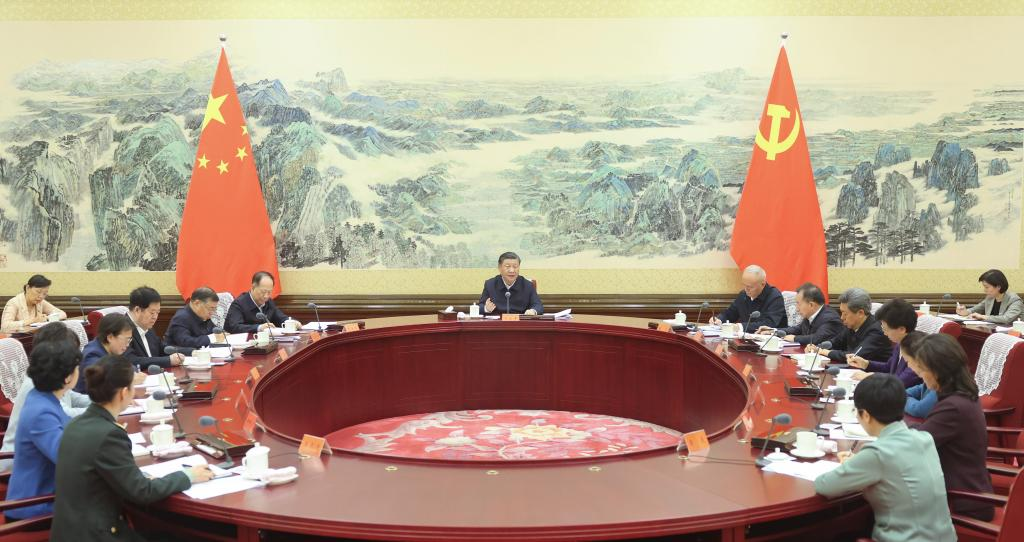China’s New Goal – Strengthening Systems, Resolving Debts, And Fostering Economic Growth – To Become A Financial Powerhouse
In the wake of China's recent financial work conference, the country has zoned in on a goal - to solidify its standing as a financial powerhouse. The recent conference outlines strategic initiatives to deepen equity financing, enhance the quality of publicly traded companies, and address the escalating risks associated with local government debts. This reflects a nuanced shift in policy thinking, where a concerted effort is being made to streamline financial systems, resolve debt challenges, and lay the foundation for sustained economic growth.

China has set a significant objective for itself—to establish itself as a financial powerhouse.
This ambition was formally declared for the first time during the government’s biennial Central Financial Work Conference, where the Communist Party was entrusted with the responsibility of accomplishing this goal.
The conference, the sixth of its kind since 1997, stressed the vital role of finance as the lifeblood of the national economy and a key factor in the country’s core competitiveness.
Unlike its predecessors, this meeting addressed a variety of challenges faced by China’s financial system. Held against a backdrop of decelerating economic growth, a prolonged downturn in the property industry, bearish stock markets, and escalating local government debt, the discussions also notably looked into the real estate sector for the first time.

According to Luo Zhiheng, Chief Macroeconomic Analyst of Yuekai Securities, President Xi Jinping led the conference, which saw considerable discourse on the theme of “strengthened regulation, risk prevention, and growth promotion under the Communist Party’s leadership over the financial sector.
The Communist Party’s role in financial matters was reinforced, emphasising “centralised and unified” leadership deemed the “fundamental guarantee” for all financial work.
The renaming of the conference from the National Financial Work Conference to the Central Financial Work Conference reflects the increased oversight by the ruling party over financial affairs, as indicated by several senior financial industry participants.
The newly established Central Financial Commission (CFC), created in March to oversee financial work directly under the Communist Party’s central committee, will play a crucial role in overall planning and coordination.
The conference outlined that the Central Financial Work Commission (CFWC) should concentrate on party building within the financial system, and local branches of the CFC and CFWC are assigned similar responsibilities.
The conference also addressed the historical challenge where local governments assumed primary responsibility for handling local financial risks.
Provincial financial regulators often face challenges due to a perceived lack of authority, leading to confusion regarding decision-making responsibilities; thus, the move aims to streamline and strengthen the decision-making process at both central and local levels within the financial regulatory domain.
According to insights from the financial work conference, local governments are set to establish provincial and municipal offices of the Central Financial Commission (CFC) and the Central Financial Work Commission (CFWC), thereby clearly defining their authority over financial oversight at the local level, as highlighted by a senior financial regulator in Shanghai.

Technology In Focus
In technology financing, a focal point of this year’s conference was how finance could better serve the real economy.
The gathering emphasised the need for increased financing to drive scientific and technological innovation, advance manufacturing, promote green development, and support micro, small, and medium-sized enterprises (MSMEs).
Notably, support for small and medium-sized tech enterprises took center stage, marking a departure from previous financial work conferences.
Science and technology were positioned at the forefront of financing priorities this year. However, challenges were identified, with many banks lacking the incentives and capacity to effectively serve small and medium-sized tech enterprises.
The majority of tech startups primarily rely on venture capital and the capital market for funding, with commercial bank lending viewed as only complementary.
To enhance tech financing data, some banks reportedly employ “tricks,” such as classifying loans to state-owned enterprises that purchase products or services from tech companies as tech financing.
Additionally, according to industry insiders, inflating tech loan numbers by including loans to companies remotely related to the tech sector is a common practice.
As noted by industry experts, the high-risk nature of tech startups, coupled with the lack of traditional collateral, poses challenges for banks in lending to tech companies. The risks involved, likened to gambling, create a mismatch between risks and returns, making it less attractive for banks to provide loans to such companies.

Mitigating Risks
Addressing broader financial risks, the conference identified local government debts, the property sector, and small and medium-sized financial institutions as key areas of concern.
The meeting highlighted high-profile cases, including a multibillion-dollar scam by Henan village banks, the debt failure of China Evergrande Group, and the bankruptcy of Chinese aluminum giant Zhongwang Group.
In response to the challenges faced by the property sector, the conference outlined plans to enhance the regulation of property developers and their access to funding.
The emphasis was on equal treatment of all developers, whether state-owned or private, in meeting reasonable financing needs. Cities were urged to implement housing policies tailored to their specific situations, leverage policies supporting housing demand, accelerate affordable housing construction, and pioneer a new model of real estate development.
The construction of affordable housing, urban village renovation, and infrastructure projects were identified as measures not only to offset the decline in property investment but also to improve living conditions for the populace, according to insights shared during the meeting.
China’s property market experienced a liquidity crisis in 2021 due to a central government deleveraging campaign targeting overindebted developers.
The policy led to a housing sales slump and falling prices, impacting even major developers like Country Garden Holdings Co. Despite subsequent measures to alleviate the crisis, some developers defaulted on significant offshore bonds, leaving unfinished projects and limited access to financing.
According to the latest financial work conference, China is set to deepen and consolidate the registration system for stock issuance, aiming to foster diversified equity financing and enhance the quality of publicly traded companies.
Addressing growing concerns over local government debt risks, the conference outlined plans to establish a system to resolve these risks and construct a mechanism for managing government debt to support high-quality economic growth.
The initiative reflects a broadened focus from hidden debt to encompass all forms of local debt, including the liabilities of local government financing vehicles (LGFVs), such as bank loans, publicly issued bonds, and debts owed to businesses.
In the 2017 meeting, local governments were instructed to resolve hidden debt within five to 10 years, with no allowance for new hidden debt thereafter.
The expanded scope of the debt issue in the current meeting emphasises the leadership’s determination to comprehensively address the entire local debt problem.
The conference also called for the optimisation of the debt structure of both central and local governments. Presently, local governments shoulder a larger share of China’s government debt than the central government, with higher borrowing costs.

Local government debts constitute 80% of China’s total government debt, and the average interest rate on similar-maturity local debt is around 6%, significantly higher than the 2.5% to 2.6% interest rate on ten-year bonds issued by the Finance Ministry.
To alleviate the burden on local governments, some scholars suggested that the central government increase its own borrowing, a move already in progress.
A recent meeting of the Standing Committee of the National People’s Congress approved a 1 trillion yuan ($137 billion) special bond, with the funds allocated to local governments.
The shift towards financing infrastructure investment through sovereign debt issuance signifies a change in China’s policy approach, placing more fiscal responsibility on the central government as local authorities face limitations in borrowing capacity.
The Last Bit, As the financial work conference concludes, China emerges with a clear roadmap for the future.
The commitment to deepening equity financing, resolving local government debt risks, and optimising the debt structure demonstrates a resolute effort to fortify the nation’s economic foundation.
By expanding the focus from hidden debt to encompass all local debt, China emphasises its dedication to comprehensive solutions -the strategic shift towards financing infrastructure through sovereign debt issuance reflects a nuanced approach, acknowledging the fiscal limitations of local authorities.
With these initiatives, China is hoping to chart a course towards financial resilience bolstered by a commitment to quality growth and a more balanced and sustainable economy.




